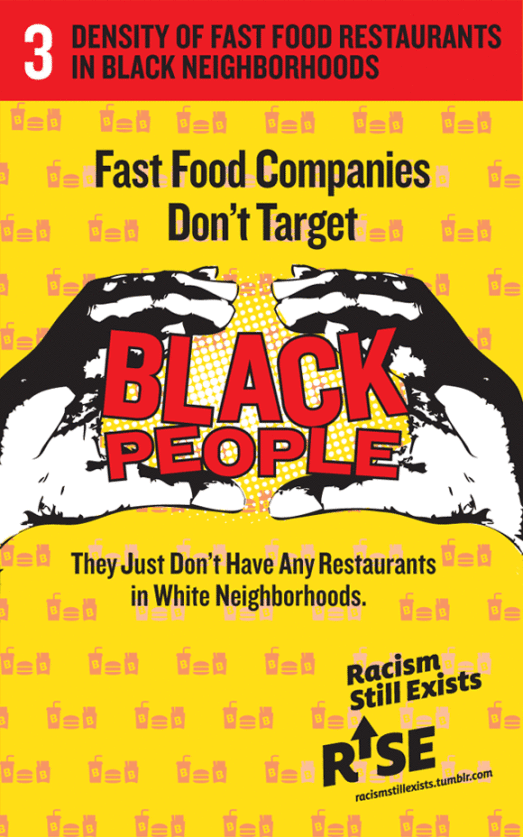Fast Food/Soda Companies Target Black Youth with Sugar Drinks & Heart Attack Food (racism still exists)
 In photo, a billboard from RacismStillExists.Tumblr.com posted in NYC this month. [HERE] From [HERE] and Black youth are nearly twice as likely as their white counterparts to take in large quantities of their daily calories from sugary drinks, according to a new study examining American beverage consumption. Low-income children of all racial backgrounds also tend to drink almost twice as many sugary beverages as wealthier Americans do.
In photo, a billboard from RacismStillExists.Tumblr.com posted in NYC this month. [HERE] From [HERE] and Black youth are nearly twice as likely as their white counterparts to take in large quantities of their daily calories from sugary drinks, according to a new study examining American beverage consumption. Low-income children of all racial backgrounds also tend to drink almost twice as many sugary beverages as wealthier Americans do.
Considering the fact that sugar-filled drinks have been conclusively linked to an increased risk for obesity, the study’s results reveal some of the racial and economic disparities within the nation’s obesity epidemic. “Some groups may be more at risk for soda, others may be more at risk for fruit drinks, all of which … have the same sugar base that contributes to obesity and disease,” one of the study’s co-authors, health policy researcher Lisa Powell, explained.
It’s not clear whether the soda industry is also disproportionately targeting low-income or minority groups, but it wouldn’t be the first beverage sector to try. Alcohol advertising has been proven to particularly target black youth, even despite the fact that African-American teens tend to drink less alcohol than youths from other racial groups.

Density of fast food restaurants in Black neighborhoods
From [RacismStillExists] “Every time you turn around and want to get something to eat the only thing you see is one of these greasy joints and fast food restaurants.”
“The community right here is all fast food restaurants, you don’t have the vegetables and what you’re supposed to be eating. You got to go out the neighborhood to get it.”
These statements were made by residents on Chicago’s South Side [1], but they could have been uttered by residents from any number of Black neighborhoods across the country. It has long been voiced at the community level that Black neighborhoods have disproportionate densities of fast food restaurants. And research studies have consistently supported these claims [2].
A 2004 study conducted in New Orleans looked at the relationship between fast food density (the number of restaurants per square mile in shopping areas) and the percentage of Black residents. They also looked at the effect of neighborhood income. Only the percentage of Black residents was related to fast food density, and Black neighborhoods had 6 times as much fast food as White neighborhoods [3]. On the other hand, a study in Atlanta showed that low and high income predominantly Black areas had less access than comparable White areas to restaurants that were not fast food [4]. The fact that this was true for low and high income areas highlights the fact that income is not the driving factor. It is often assumed that if Black neighborhoods have high densities of fast food restaurants, it is because those neighborhoods are lower in income than White neighborhoods, and perhaps fast food companies target lower income customers. But research consistently shows that income is not the only factor. In some studies, race is just as important as income. In others, race is the only important factor. [MORE]